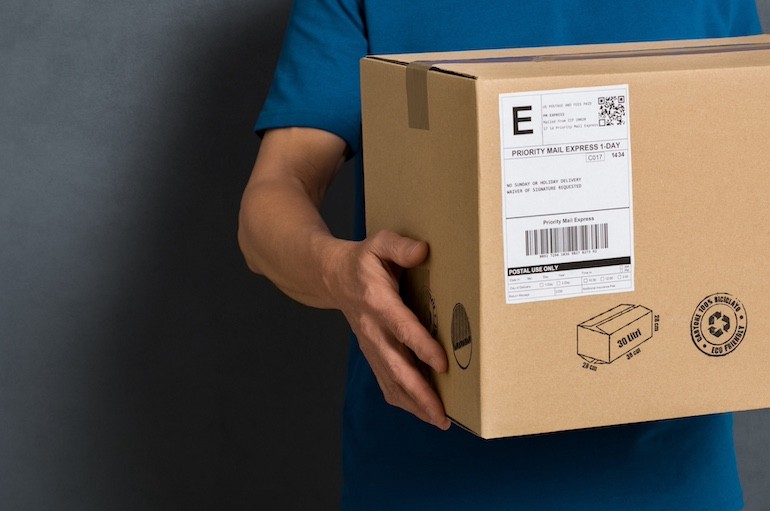The Retail Delivery Wars and Growth of Global eCommerce
Do you currently have over 10,000 t-shirts (or shoes, earrings, books, spices, you name it) in your store’s warehouse and need to sell and ship them as efficiently and profitably as possible?
Or perhaps you are trying to grow your company by expanding internationally, but need to ensure that you maintain the same shipping standards your domestic customers have come to expect.
If that sounds like you, then it’s time to play retail delivery wars.
What are the Retail Delivery Wars?
The retail delivery wars is a lot like a strategy game. Think Settlers of Catan, but with clothing, watches, and overnight packages instead of brick, lumber, sheep, and grain.
The logistics game started with the growth of eCommerce. As the eCommerce market grows by leaps and bounds, merchants and carriers are working to deliver packages faster and more efficiently.
In the United States, Amazon is shifting to standard one-day delivery for Prime members, while Walmart and other traditional retailers are offering one-day or same-day shipping.
But if you want to win the retail delivery wars by increasing your sales and profit, you’ll need to plot a path to global domination.
You may have a pretty good idea of what your domestic customers want, but when you’re shipping scuba equipment to Spain, books to London, or dresses to Germany, what do your international customers expect?
The retail delivery wars are raising customer expectations at home and abroad. So how exactly are retailers adapting to this change?
In this post, we’re taking a closer look at the emerging retail delivery wars: who’s playing, what’s at stake, and how you can win. Follow along and we’ll breakdown the game so you come out on top.
The Players: Merchants
In the retail delivery wars, merchants are trying to meet shoppers’ growing demand for faster delivery. Let’s go through a few examples from some of the players currently dominating the shipping leaderboard:
Amazon
In April, Amazon announced it was investing in the necessary fulfillment and transportation to cut the standard delivery for Prime members from two days to one.
Before making any improvements to its network, the retail giant can already offer same-day and next-day delivery to three-fourths of the U.S. population
Walmart
Not to be outdone, Walmart announced it would offer free next-day delivery with a $35 minimum order and no membership fee.
Not every Walmart.com item will be included. Shoppers will need to select from one of 220,000 items Walmart has participating in the program.
While it’s only launched in California, the program is expected to cover about 75 percent of the U.S. population by the end of the year.
Target
Next up, it was Target’s turn to announce a shipping change.
In June, Target unveiled a new section of its website for same-day shipping. The orders are fulfilled by Shipt. Target bought the start-up delivery service in 2017.
Until now, customers had to order through the Shipt website and app and pay an annual membership fee.
Shoppers can now order same-day items directly from Target’s website and choose between an annual membership or a one-time $9.99 delivery fee.
So is quicker always better?
The increased demand for fast shipping is impacting more than just retailers.
Last month, FedEx Ground recently announced it would offer year-round 7-day residential delivery. FedEx already offered residential ground delivery every day of the week during holiday seasons but will begin offering it year-round in January 2020.
The company expects the average daily volume for small parcels in the U.S. to double by 2026.
What about shipping internationally?
It would be easy to misread all the moves from carriers and merchants to mean you have to implement insanely fast delivery times.
For domestic orders, delivery speed is key, but in most cases, next day delivery isn’t feasible for international orders.
Remember the retail delivery wars are about strategy. Just delivering packages the quickest won’t make you the winner.
The Stakes: Exceeding Customer Expectations
To win, you’ll need to invest in building the right processes, finding the best partners and utilizing the latest technology to deliver the best overall shipping experience as efficiently as possible.
For domestic orders, customers are looking for something that’s as seamless and dependable as their Amazon experience.
You don’t have to offer free overnight delivery, you just need to offer reliable, fast and affordable shipping.
For international orders, you’ll also need to focus on convenience.
Unfortunately, international shipping experiences are often a headache for consumers and merchants. A few years ago, people expected to wait two or three weeks for international orders to arrive.
But as domestic delivery speeds have increased, customers have grown less patient.
Remember in any market you’re competing against, your rivals are based in the country.
If Thomas in London wants a new watch, he’s going to compare your watch to one he can get locally. While he may be willing to wait a few days to get your watch since he likes the design better, he doesn’t like it well enough to wait three weeks.
You have to deal with duties and taxes, clearing customs and finding the right carriers. Any misstep could lead to a delay.
When you’re shipping internationally, your buyers are comparing your shipping experience to the best experience they’ve had.
They’re not going to give you a pass just because you’re shipping cross-border.
Buyers want:
- Accurate delivery dates
- Clear and frequent communication about the order and shipping updates
- No surprises – show the cost including any duties and taxes the customer will pay at checkout
- Speedy shipping
The Battlefield: Where is eCommerce Growing Internationally?
Now that you understand the players, where should you focus on building your business and plotting your eCommerce domination?
After looking at what the major US retailers are doing, you may assume you should focus on the good ol’ US of A. Afterall, we already pointed out FedEx expected small parcel volume to double by 2026.
However, only focusing on the United States puts you had a huge strategic disadvantage.
The rise of eCommerce is driving up both the demand and cost of last-mile residential delivery across the globe, according to a McKinsey and Company report.
The United States, China, and Germany account for an estimated 40 percent of the parcel delivery market.
Plus mature markets like Germany are growing at around 10 percent while some emerging markets are seeing growth rates of nearly 100 percent.
So what should we take away from those stats?
First, it should give some insight into what’s driving the retail delivery wars.
eCommerce is increasing the demand for delivery which can lead to increased prices. Carriers and merchants alike are trying to find ways to meet customers’ demands without drastically increasing prices.
Secondly, these stats show that the U.S. is only a fraction of the entire eCommerce market. Leveraging cross-border selling is a great way to grow your business.
For example, eCommerce is experiencing rapid growth in Europe.
In Germany an estimated 87 percent of the population shops online.
While in the UK, online retail spending is expected to grow nearly 15 percent in 2019. This will account for more than one-fifth of all retail spending.
Tactics and Alliances: How to Play the Retail Delivery Wars
At this point, you understand who the players are and have the lay of the land so you know where to make your next move. The question is how do you do it?
If you’re a regular reader of our blog, you know our entire focus is helping people play and win the retail delivery wars. We want to provide you with the knowledge, tools, and partnerships to ship smoothly and profitably.
With regard to growing your international sales, keep in mind that the average cart abandonment rate for international customers is a staggeringly high 70%.
This means that for one reason or another your potential international customers are likely to walk away from your shopping cart without making a purchase.
So if you are planning to grow your company by expanding outside of the US, you’ll want to be sensitive to not just a single fast delivery option.
You will need a variety of delivery choices, as well as features like tax and duty calculators and door-to-door tracking. Partnerships will be key for anyone looking to expand into cross-border shipping. You’ll need to build the right alliances to dominate the global delivery wars.
Recap: How to Win the Retail Delivery Wars
We’ve all heard the adage slow and steady wins the race.
While you certainly don’t want to do anything slow when it comes to shipping, being steady and efficient are the keys to winning delivery wars.
Follow this advice if you want to become a top player:
- Learn from what shipping tactics other retailers are using
- Explore innovative cross-border opportunities to reach new and growing markets
- Implement the best technology to deliver a stellar shipping experience
- Partner with the right carriers, especially when shipping globally
You’re now ready to play delivery wars. Go and conquer my friends!
Need help keeping up with customer expectations around shipping? Sign up for a free 30-day trial of ShipperHQ.






